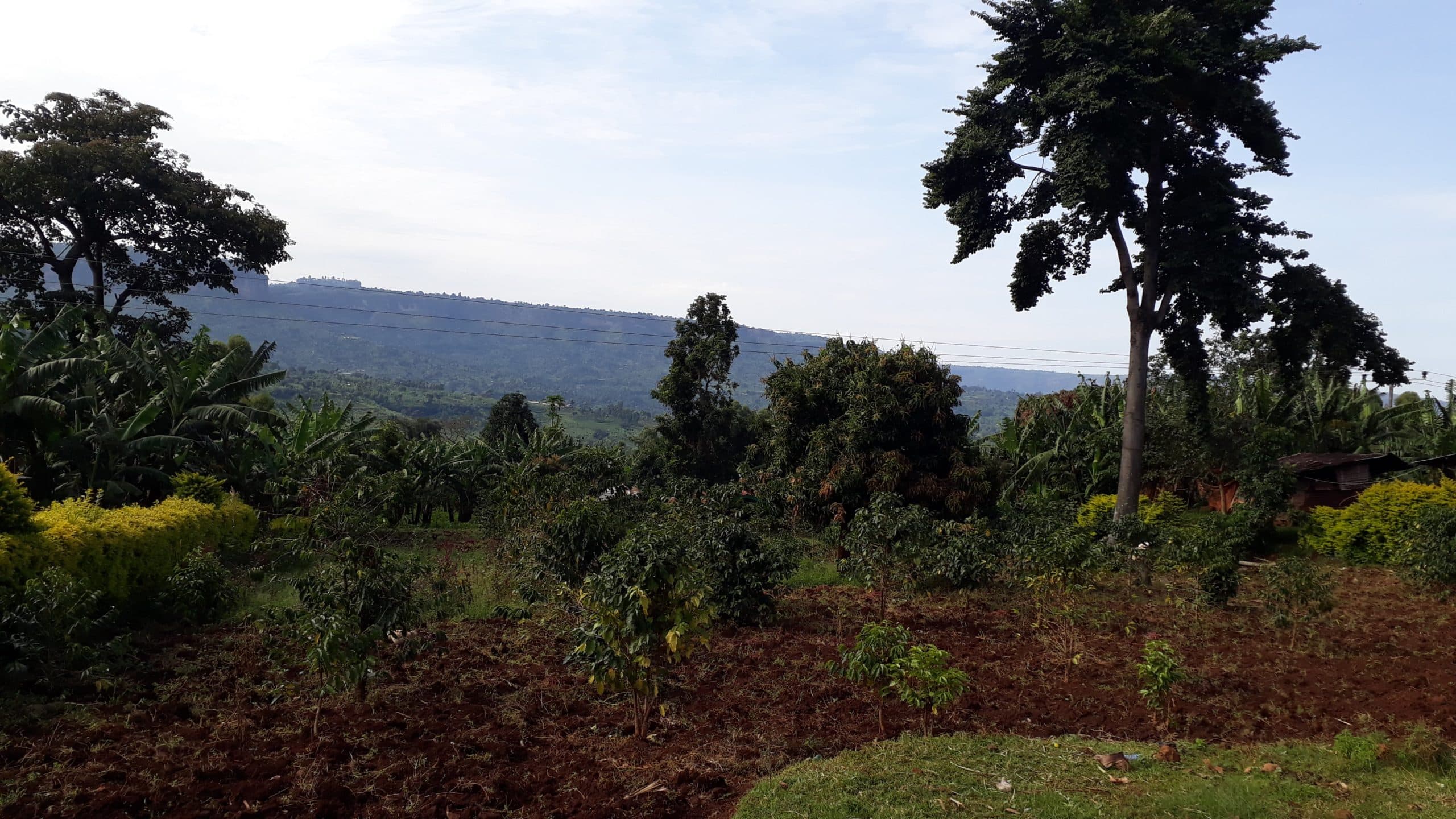It is time to rethink Uganda’s policy approach to trees on farms
- From
-
Published on
30.07.20
- Impact Area

Researchers call on the Government to promulgate the draft national agroforestry strategy to hasten tree-based rural development for multiple benefits.
High up on the southern slopes of Mount Elgon, at about 1850 metres above sea level, Masaba Alex is tending his coffee farm. A father of six, with a one-acre farm dotted with coffee plants and two heads of cattle being zero-grazed, this is his only source of income for survival. He has to pay hospital bills and equally meet school obligations from the production of coffee. He must ensure that he maximizes this.
‘I chose to leave the “khimikhikili” (Cordia africana) trees on my farm because they help in increasing the coffee yields,’ said 43-year-old Masaba.
The trees help in providing shade to the trees, but the leaf litter equally improves soil fertility. His wife, Namutosi Agnes equally believes the trees are essential for the day-to-day running of her home.
‘The park authorities only allow us two days in a week to go to the park [Ed: Mt Elgon National Park] and collect firewood,’ she said. ‘On other days, I get firewood from the trees over there,’ pointing to eucalyptus trees along the boundary with her neighbours.
Related news
-

New Genomic Discovery from ICRISAT Could Save Farmers Millions by Preventing Groundnut Sprouting Before Harvest
International Crops Research Institute for the Semi-Arid Tropics (ICRISAT)02.12.25-
Food security
-
Poverty reduction, livelihoods & jobs
Breakthrough study identifies varieties and key genes to halt sprouting before harvest in groundnut …
Read more -
-

CGIAR Climate Security team pilots a new research approach for the development of Nature-based Solutions in fragile settings
Ibukun Taiwo27.11.25-
Climate adaptation & mitigation
Responding to complex crises requires new systemic research approaches that help identify entry poin…
Read more -
-

Drones prove their worth in measuring livestock methane in Africa
International Livestock Research Institute (ILRI)26.11.25-
Mitigation
In May 2024, the International Livestock Research Institute (ILRI) and partners shared news of the…
Read more -
